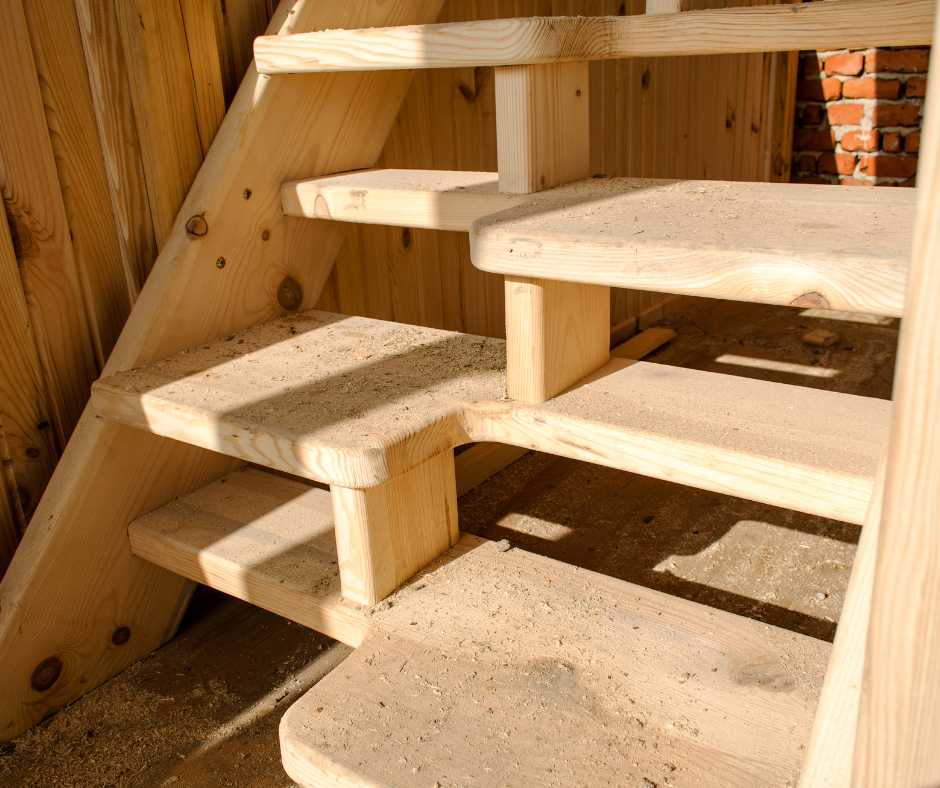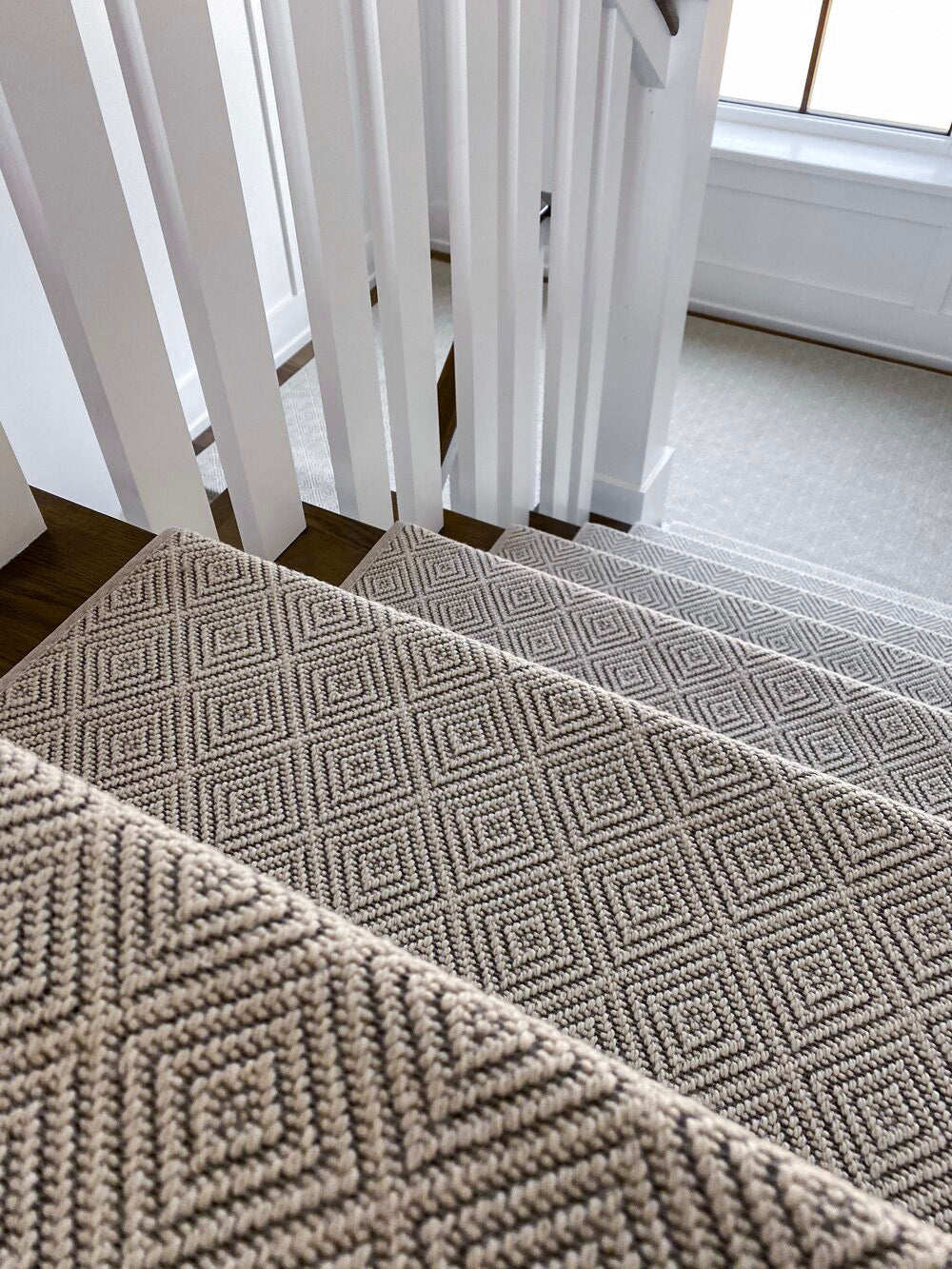Slippery outdoor steps are a safety risk, especially in wet or icy conditions.
Exterior stair nosings for concrete improve traction, enhance visibility, and protect step edges from wear.
They are a simple yet effective solution for making outdoor stairs safer and more durable.
Beyond stair nosings, carpet stair treads offer another layer of safety and style for both indoor and outdoor steps.
This guide covers everything from choosing the right nosing type to installation and additional stair safety solutions.
Keep reading to learn how to enhance your stairs with the best safety features.
Why Exterior Stair Nosings for Concrete Are Important
Outdoor concrete steps face constant exposure to weather elements, making them prone to wear and tear over time.
Without any protective covering or reinforcement, the edges of concrete steps can chip away, becoming hazardous.
Exterior stair nosings for concrete serve several critical functions:
-
Prevents Slipping – Concrete surfaces become extremely slippery when wet. Stair nosings add grip, reducing the chances of slipping, especially for children and elderly individuals.
-
Enhances Visibility – Proper stair nosing improves step visibility by highlighting where each step begins and ends. This is especially helpful in low-light conditions.
-
Protects the Stairs – The edges of concrete steps wear down over time due to foot traffic, weather, and natural erosion. Nosings act as a protective layer, preserving the lifespan of the stairs.
-
Improves Aesthetic Appeal – Available in different materials and styles, stair nosings can enhance the overall look of your outdoor stairs.
Do Concrete Steps Need Nosing?
Concrete steps, particularly those exposed to outdoor conditions, benefit significantly from stair nosings.
Here’s why:
-
Safety First – Concrete becomes extremely slick when exposed to rain, ice, or snow. A properly installed stair nosing adds traction and grip to prevent falls.
-
Longer Durability – Since stair nosings absorb much of the impact of foot traffic, they help prevent chipping and cracking along the edges of the steps.
-
Better Visibility – Steps that blend too much with their surroundings can be difficult to see. Stair nosings in contrasting colors make steps easier to navigate.
Without exterior stair nosings for concrete, staircases can wear down quickly, leading to costly repairs and dangerous conditions.
Many homeowners explore additional safety features, such as rubber stair nosing for carpet, stair treads, or textured coatings, to enhance step security.
Types of Stair Nosing for Concrete Steps
There are various types of stair nosing available for concrete stairs, each offering different benefits.
Choosing the right type depends on factors such as durability, safety, and design preferences.
-
Metal Stair Nosings – Aluminum and stainless steel stair nosings are popular for their durability and sleek appearance. They provide excellent grip and withstand harsh outdoor conditions.
-
Rubber Stair Nosings – Rubber nosings are known for their flexibility and non-slip properties, making them ideal for high-traffic areas. Many commercial properties use rubber stair nosing for carpet to improve safety.
-
PVC or Vinyl Nosings – These nosings are a cost-effective solution for residential use. They come in various colors and textures to enhance stair visibility.
-
Concrete Edge Nosings – Some stair nosings are designed to be integrated into the concrete itself, providing a permanent anti-slip feature.
When selecting stair nosings, it’s important to consider factors such as exposure to weather, foot traffic, and maintenance requirements.
How to Install Stair Nosing on Concrete
Installing stair nosing on concrete steps is a simple yet effective way to improve safety.
Whether you choose a screw-in method or adhesive-backed nosing, following the correct installation steps ensures long-lasting durability.
Materials Needed
-
Exterior stair nosings
-
Concrete adhesive or screws (depending on the type of nosing)
-
Measuring tape
-
Pencil or chalk
-
Protective gloves
-
Safety goggles
Installation Steps
-
Measure and Mark – Measure the width of your steps and cut the stair nosing to fit. Use chalk or a pencil to mark where the nosing will be placed.
-
Prepare the Surface – Clean the concrete surface to remove dirt, dust, or debris. This ensures a secure bond between the nosing and the concrete.
-
Apply Adhesive or Drill Pilot Holes – For adhesive-backed nosings, apply a high-strength concrete adhesive to the underside of the nosing. If using screw-in nosings, drill small pilot holes in the marked areas.
-
Place the Nosing – Align the nosing with your marks and press it firmly onto the step edge.
-
Secure the Nosing – If using screws, insert them into the pilot holes to hold the nosing in place. If using adhesive, apply firm pressure to ensure a strong bond.
-
Final Check – Allow the adhesive to dry completely and check that the nosing is properly secured before using the steps.
Additional Ways to Make Outdoor Concrete Steps Safer
Besides exterior stair nosings for concrete, there are other effective ways to enhance outdoor stair safety.
Non-Slip Coatings
Applying a textured non-slip coating or anti-slip paint to your steps can significantly improve traction.
These coatings are especially useful for preventing slips in rainy or icy weather.
Adding Handrails
Handrails provide extra stability and support for anyone using the stairs.
They are particularly beneficial for older individuals, children, and people with mobility challenges.
Better Outdoor Lighting
Proper lighting around stairways ensures better visibility at night.
Consider installing motion-sensor lights or pathway lights along the edges of your stairs.
Anti-Slip Tapes
Anti-slip adhesive tapes are an affordable and quick way to add traction to concrete steps.
These tapes come in various textures and colors, helping improve both safety and visibility.
Regular Cleaning and Maintenance
Outdoor stairs often accumulate dirt, moss, or algae, which can make them dangerously slippery.
Regularly cleaning your steps prevents buildup and keeps them safe to use.
When to Replace Stair Nosings
Over time, even the most durable stair nosings can wear down.
Here are signs that it’s time to replace them:
-
Visible cracks, chips, or peeling on the nosing surface
-
Reduced traction, making the steps feel slippery
-
Loose or detached nosings that no longer adhere properly
-
Fading or discoloration that reduces visibility
Regularly inspecting and maintaining your stair nosings ensures they continue to provide safety and durability for years.
Steps To Success
Installing exterior stair nosings for concrete is one of the best ways to make outdoor steps safer and longer-lasting.
These simple additions improve traction, protect stair edges, and enhance visibility, reducing the risk of slips and falls.
While Oak Valley Designs does not sell stair nosings, we specialize in premium-quality stair treads, including outdoor options that blend safety with style.
Whether you're looking to protect your indoor or outdoor stairs, our handcrafted stair treads are designed to enhance both function and aesthetics.
For homeowners who want to create a safer, more stylish outdoor space, investing in stair nosings, stair treads, and other safety features is a smart choice.
Contact Oak Valley Designs
For high-quality, custom stair treads tailored to alternating tread stairs, Oak Valley Designs provides expert solutions designed for both indoor and outdoor applications.
-
Website: https://oakvalleydesigns.com/
-
Phone: 706.331.0315
-
Email: info@oakvalleydesigns.com
-
Address: 30 River Ct SW Bldg E Cartersville, Ga 30120




